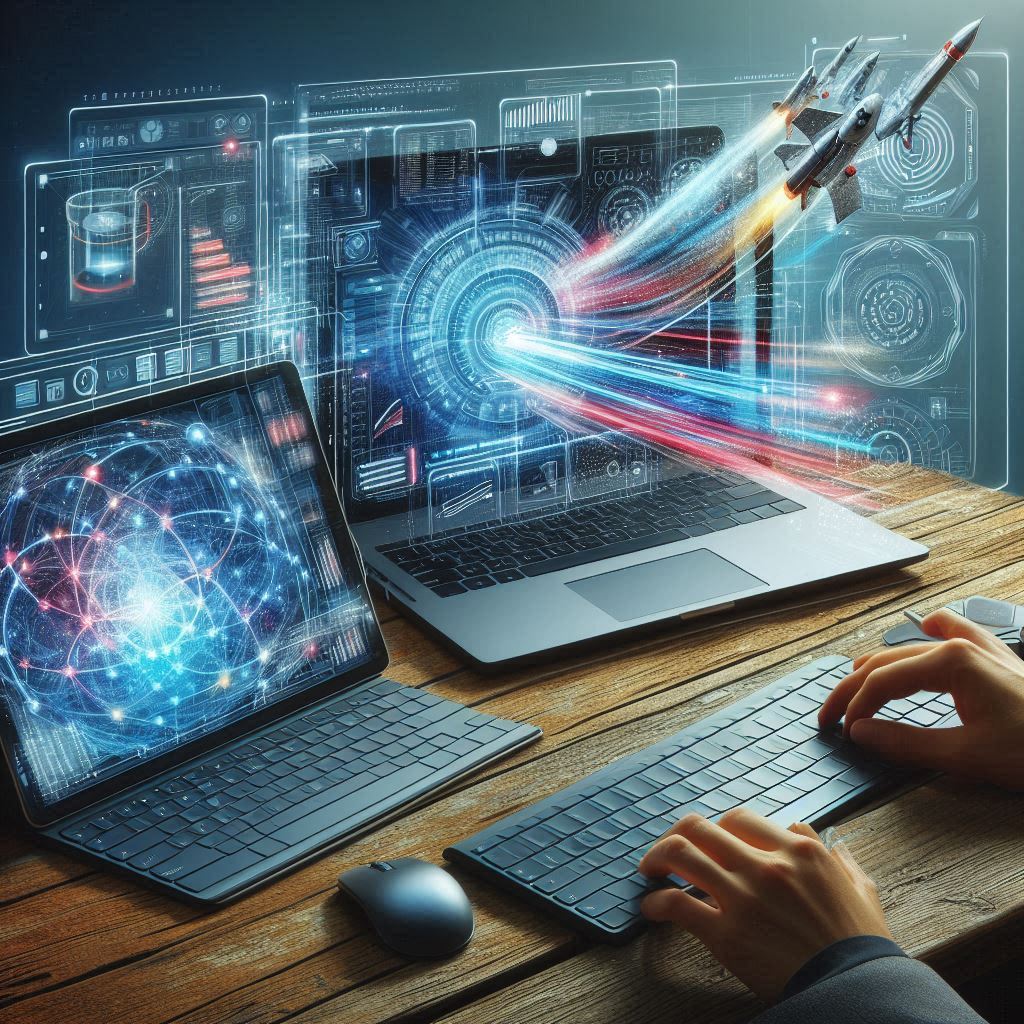How to Clean Your Computer and Its Components. Keeping your computer and its components clean is essential for optimal performance and longevity. A clean system not only functions better but also prevents dust-related overheating and minimizes the spread of germs. Whether it’s your desktop, laptop, or peripherals, regular maintenance ensures a longer life for your device.
How to Clean Your Computer and Its Components
How Often Should You Clean Your Computer?
The frequency of cleaning depends on various factors like the environment and usage. To determine your cleaning schedule, consider:
- Does your computer sit on the floor?
- Is it exposed to dust, pets, or smoke?
- Do you eat or drink near it?
If you answered “yes” to any of these, clean your system more frequently, ideally every 1-3 months.
General Cleaning Tips
- Turn off and unplug all devices before cleaning.
- Use lint-free cloths, isopropyl alcohol, and compressed air for safe cleaning.
- Avoid spraying liquids directly on components.
Essential Cleaning Tools
- Compressed Air: Removes dust from tight spaces.
- Microfiber Cloths: Prevent scratches on screens and surfaces.
- Isopropyl Alcohol (70-90%): Cleans grime without damaging electronics.
- Soft Brushes: Removes stubborn dust.
Step-by-Step Cleaning Guide
1. Cleaning the Computer Case
- Use compressed air to remove dust from vents and fans.
- Wipe the exterior with a damp microfiber cloth.
- Open the case and blow out internal dust carefully.
2. Disc Drives (CD/DVD)
- Use a cleaning disc or soft cloth to remove smudges.
- Avoid harsh chemicals.
3. Hard Drives
- Delete unnecessary files and defragment regularly.
- Use software tools to check for disk errors.
4. Keyboard
- Shake out loose debris.
- Use compressed air to clean between keys.
- Wipe with an alcohol-dampened cloth.
5. LCD/LED Monitors
- Use a screen-safe cleaner or damp microfiber cloth.
- Gently wipe to avoid pressure damage.
6. Motherboard
- Blow dust off with compressed air.
- Avoid touching components directly.
7. Mouse
- Wipe the exterior and clean the sensor area.
8. Printer and Scanner
- Wipe the exterior and clean paper feed areas.
- Use manufacturer-approved cleaning kits for internal components.
9. System Fans
- Remove fans if accessible and clean with compressed air.
- Hold fan blades still to prevent spinning during cleaning.
10. Laptops and Smartphones
- For laptops, focus on vents, keyboard, and screens.
- Use a lint-free cloth and alcohol wipes for smartphones.
Advanced Cleaning Techniques and Best Practices
In addition to regular cleaning, adopting advanced techniques ensures your computer remains in top shape. Here are some additional tips for deep cleaning and long-term maintenance:
1. Use an Air Purifier in the Room
Installing an air purifier in your workspace reduces airborne dust, making your cleaning efforts more effective and less frequent.
2. Avoid Smoking and Eating Near the Computer
Smoke and food particles can cause residue buildup on internal and external components. Keep your workspace clean and free from contaminants.
3. Replace Thermal Paste Periodically
For desktops and high-performance laptops, replacing the thermal paste on the CPU every 2-3 years ensures proper heat dissipation. Clean the old paste carefully and apply a thin, even layer of new paste.
4. Organize Cables and Wires
Use cable organizers or ties to keep cables tidy. This reduces dust accumulation and improves airflow around the system.
5. Regular Software Maintenance
While physical cleaning is essential, digital decluttering is equally important. Uninstall unused programs, clear temporary files, and run antivirus scans.
6. Monitor Temperature Levels
Use software tools to track your computer’s internal temperatures. High temperatures often indicate dust buildup or cooling inefficiency.
By integrating these advanced practices, you can enhance your system’s longevity and performance. Proper cleaning and maintenance not only protect your investment but also ensure a seamless computing experience for years to come.
Miscellaneous Cleaning Steps
- Remove dust from cables and power adapters.
- Ensure peripherals like headphones and speakers are wiped down.
Also Read – Windows Defender Tips! Run a Scan on Windows 10
Conclusion
Regularly cleaning your computer and its components enhances performance, ensures proper airflow, and reduces wear and tear. By incorporating these steps into your routine, you can extend your system’s lifespan and maintain its efficiency. Always handle components carefully and use appropriate tools for the best results.



